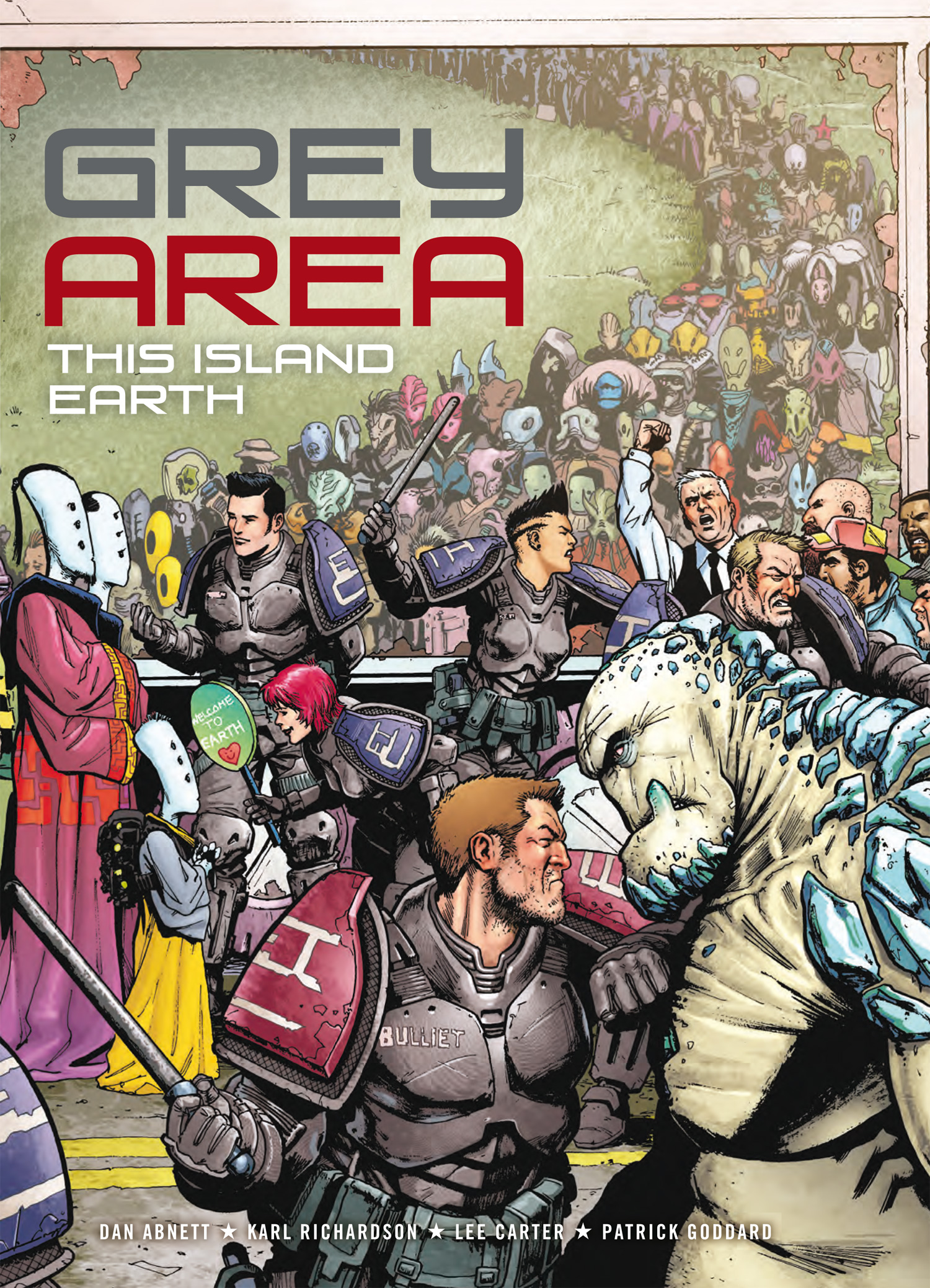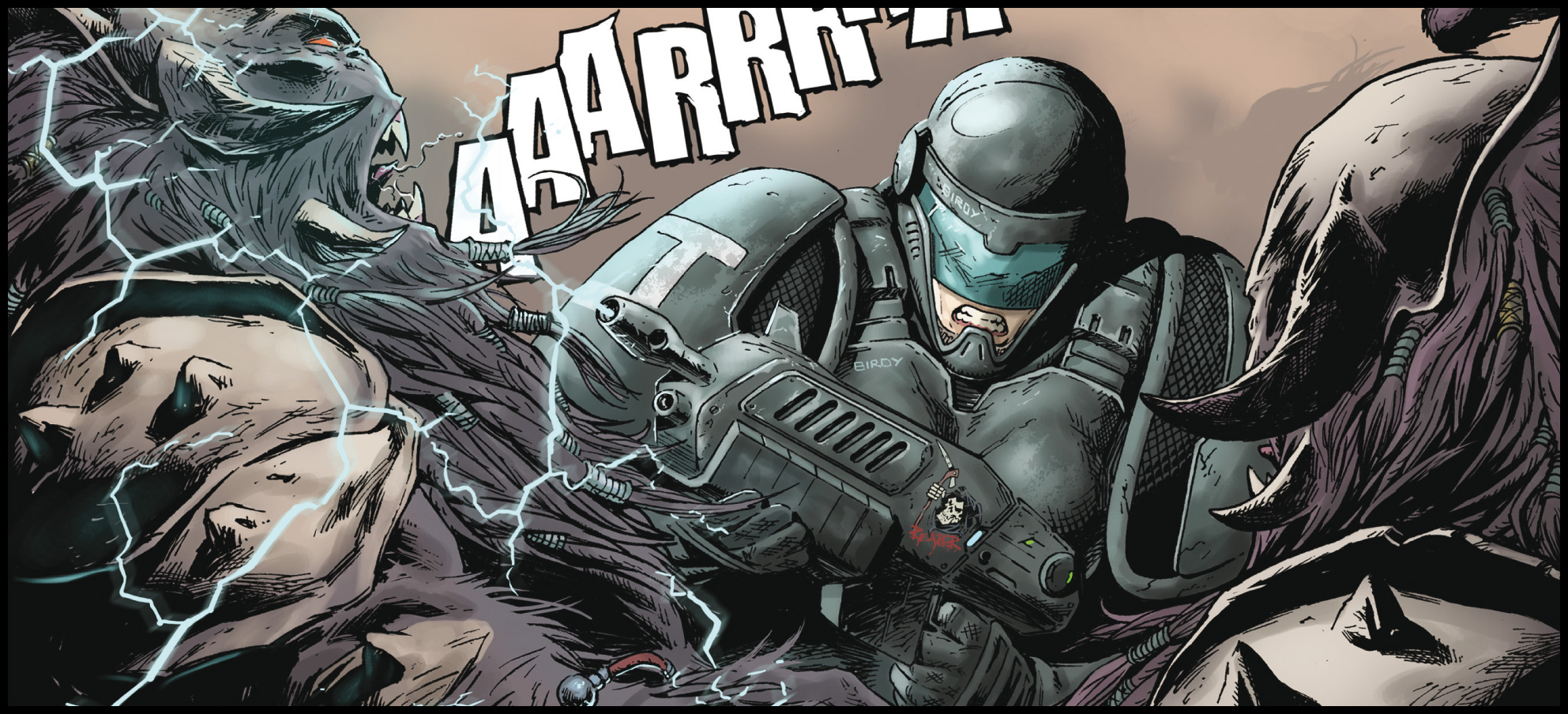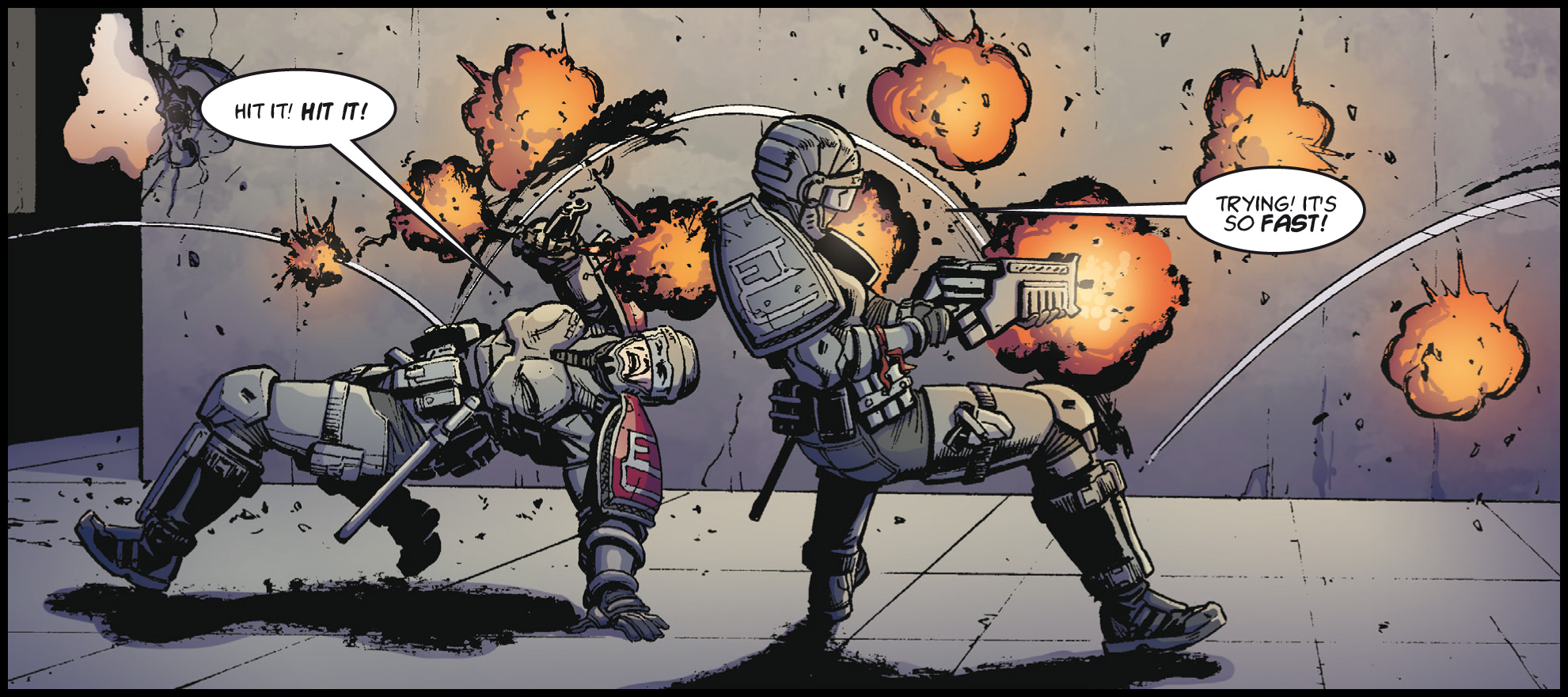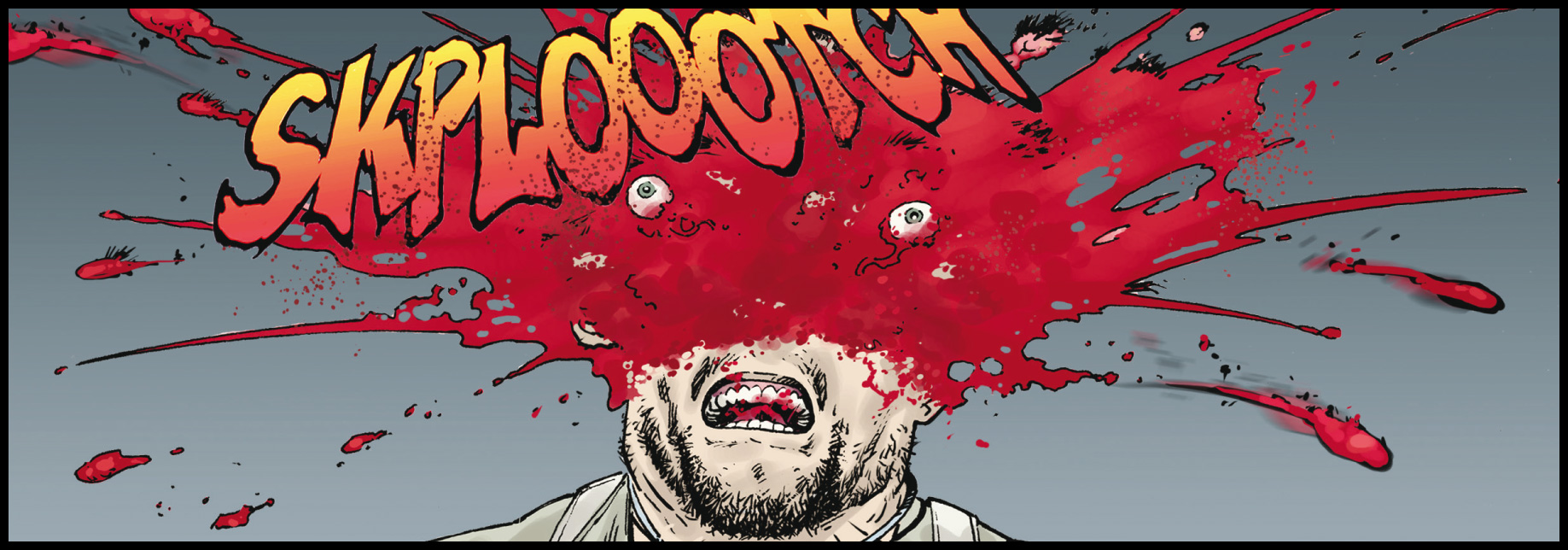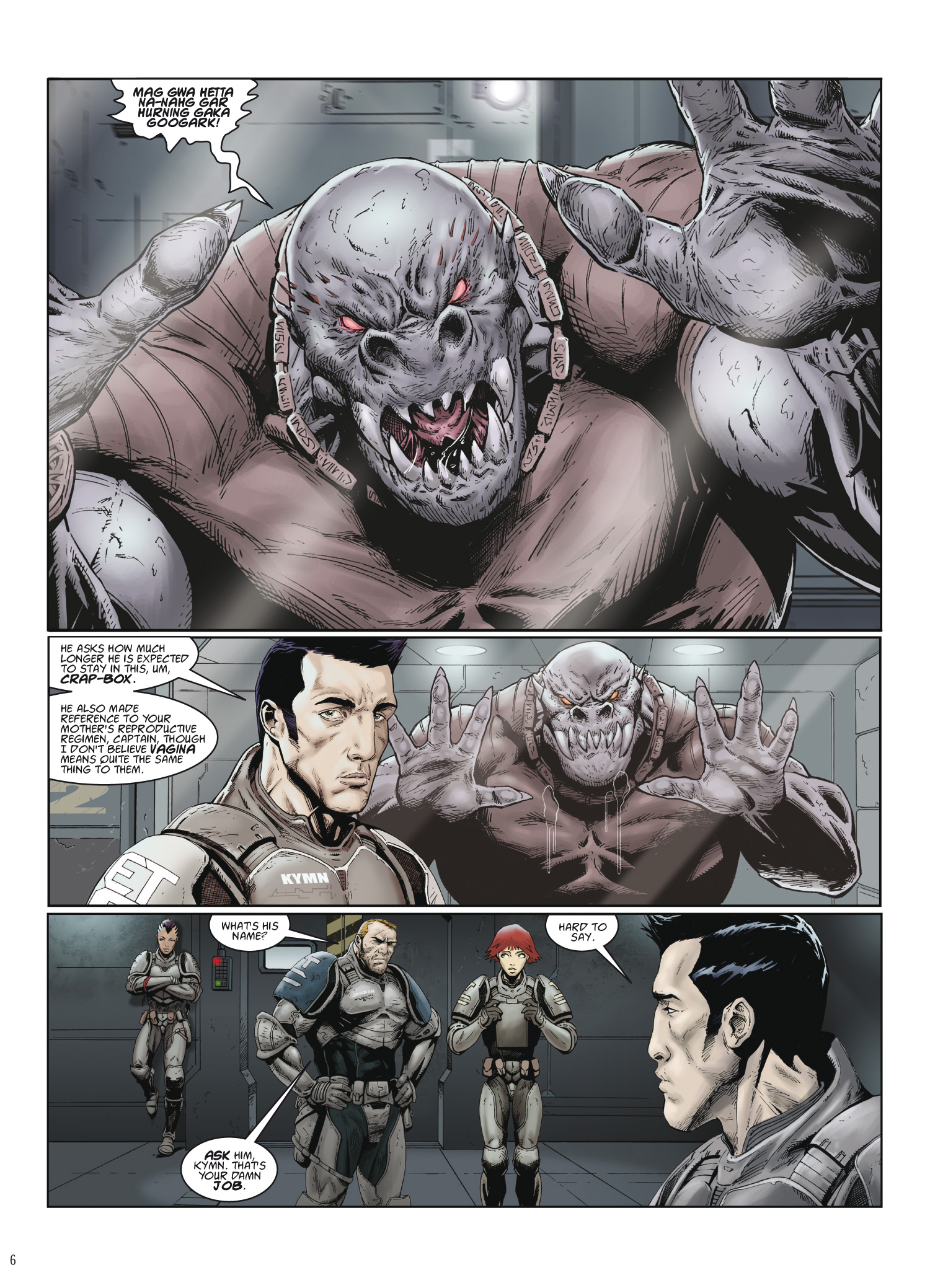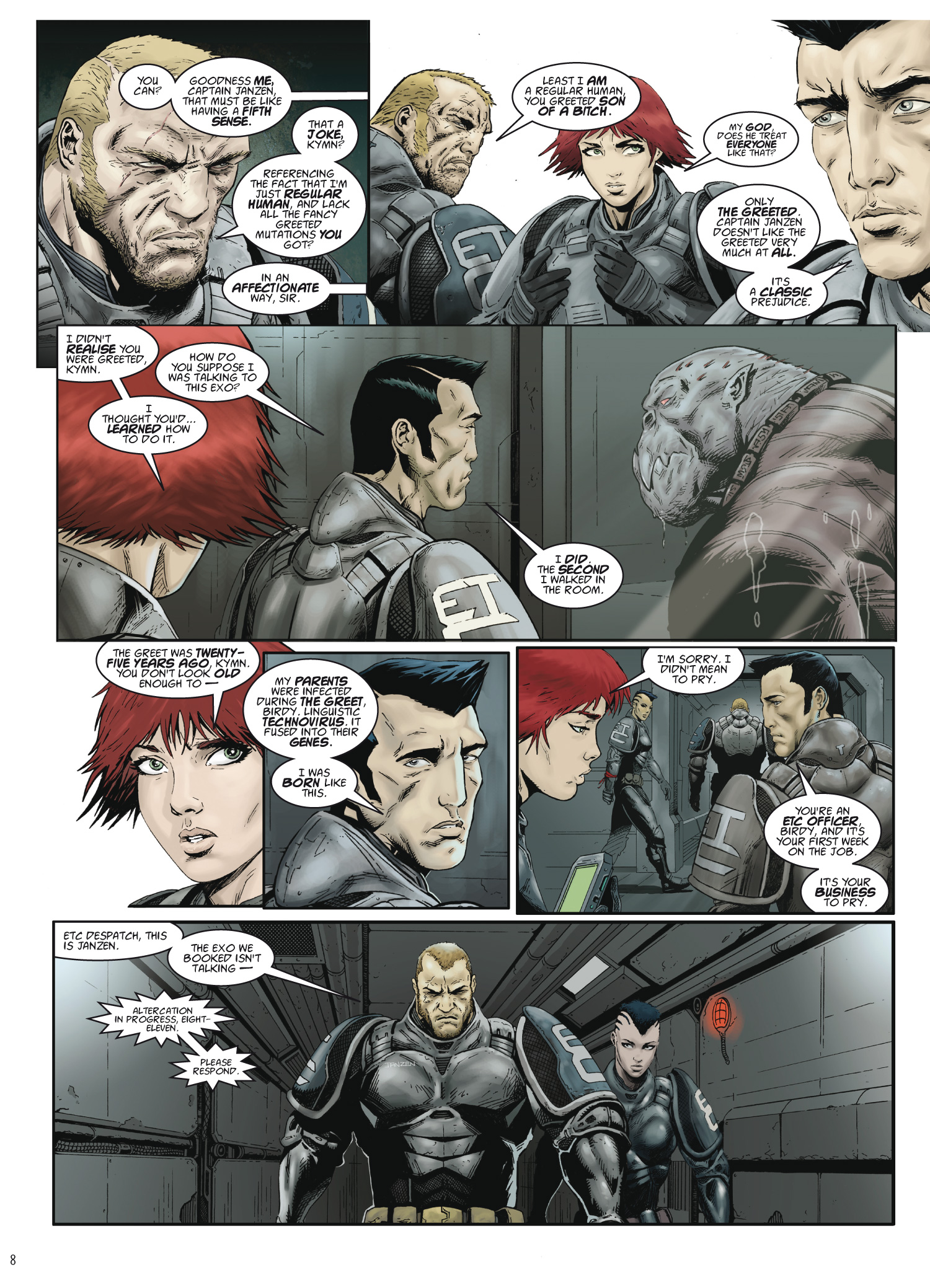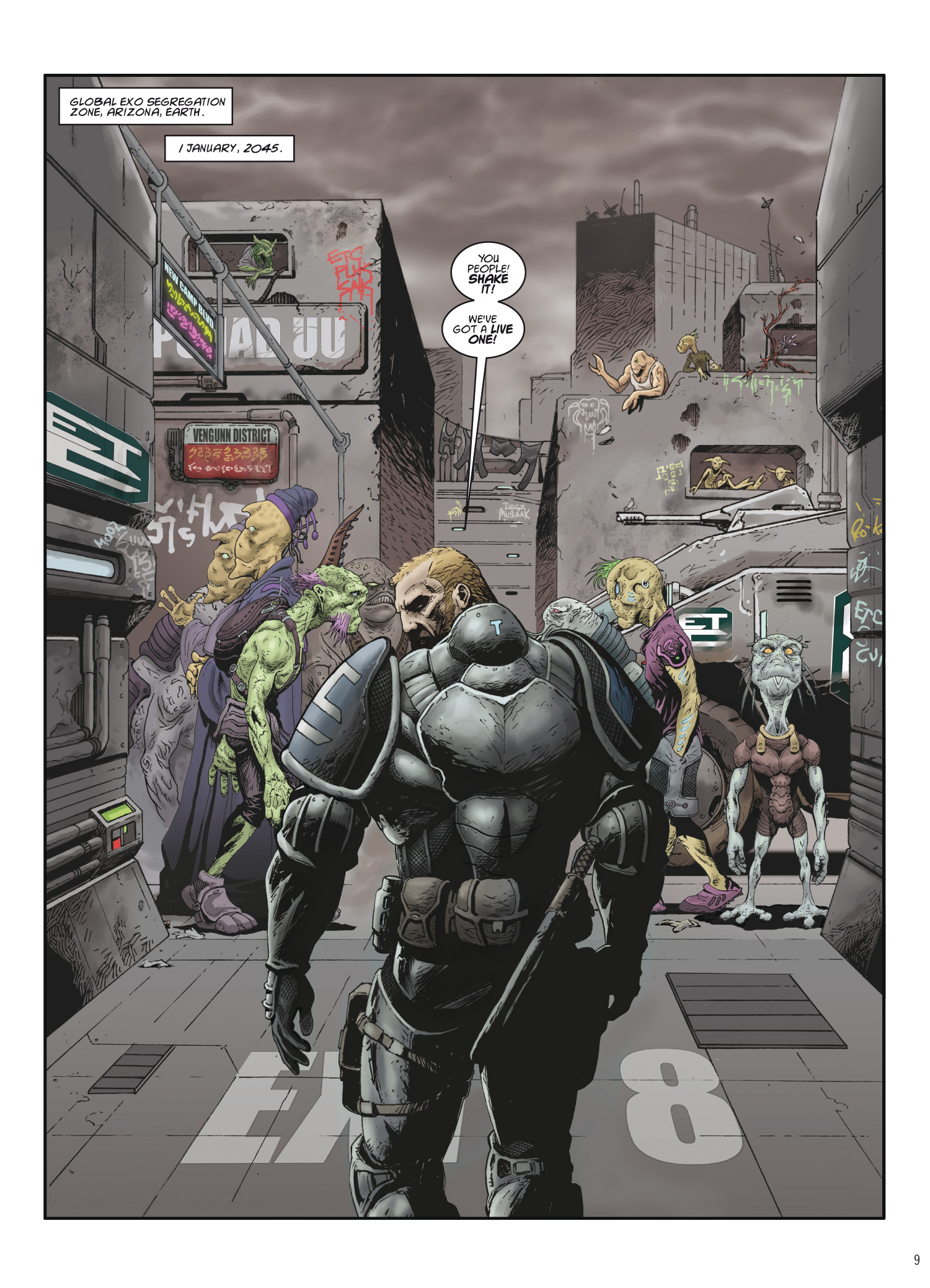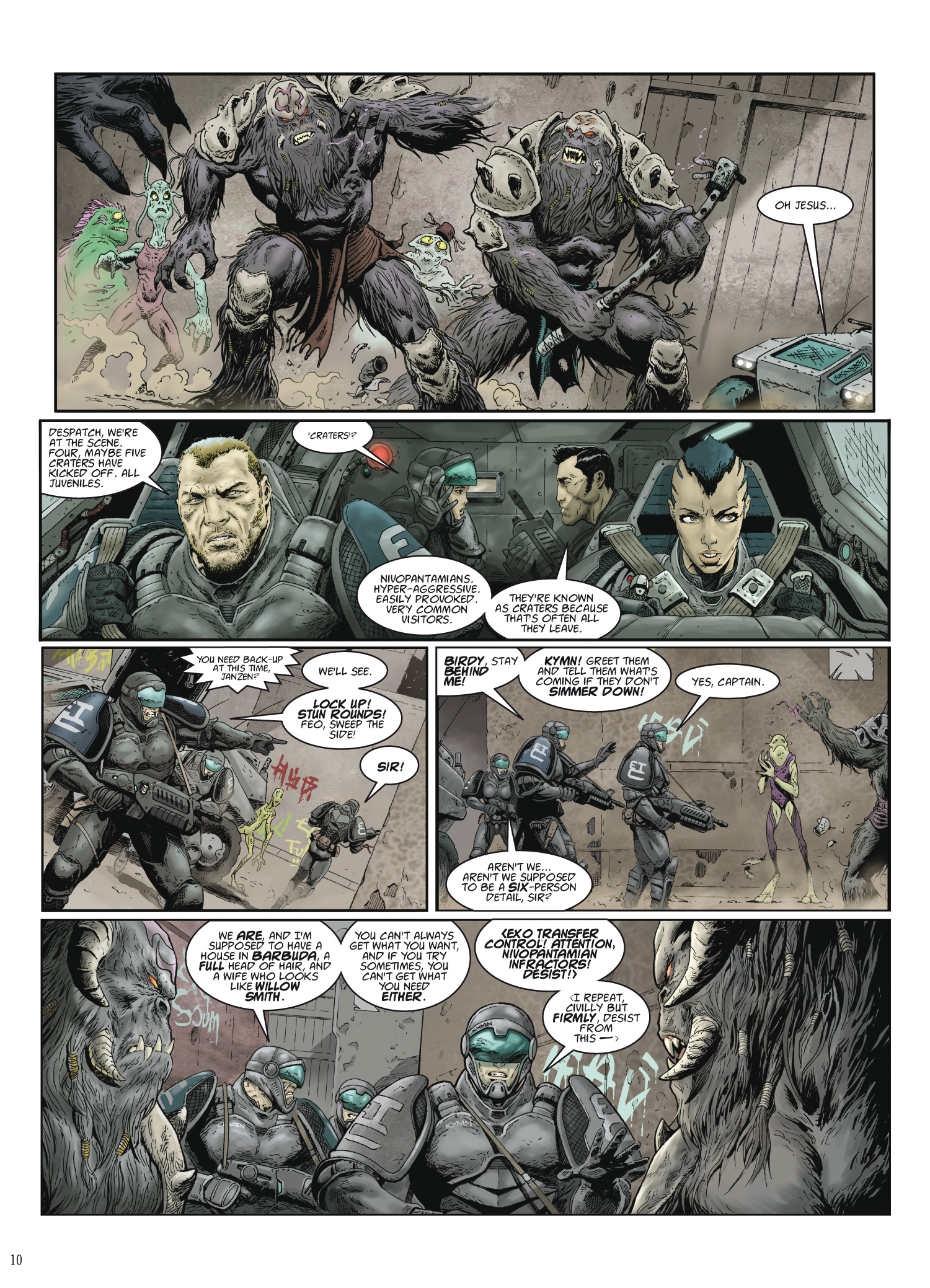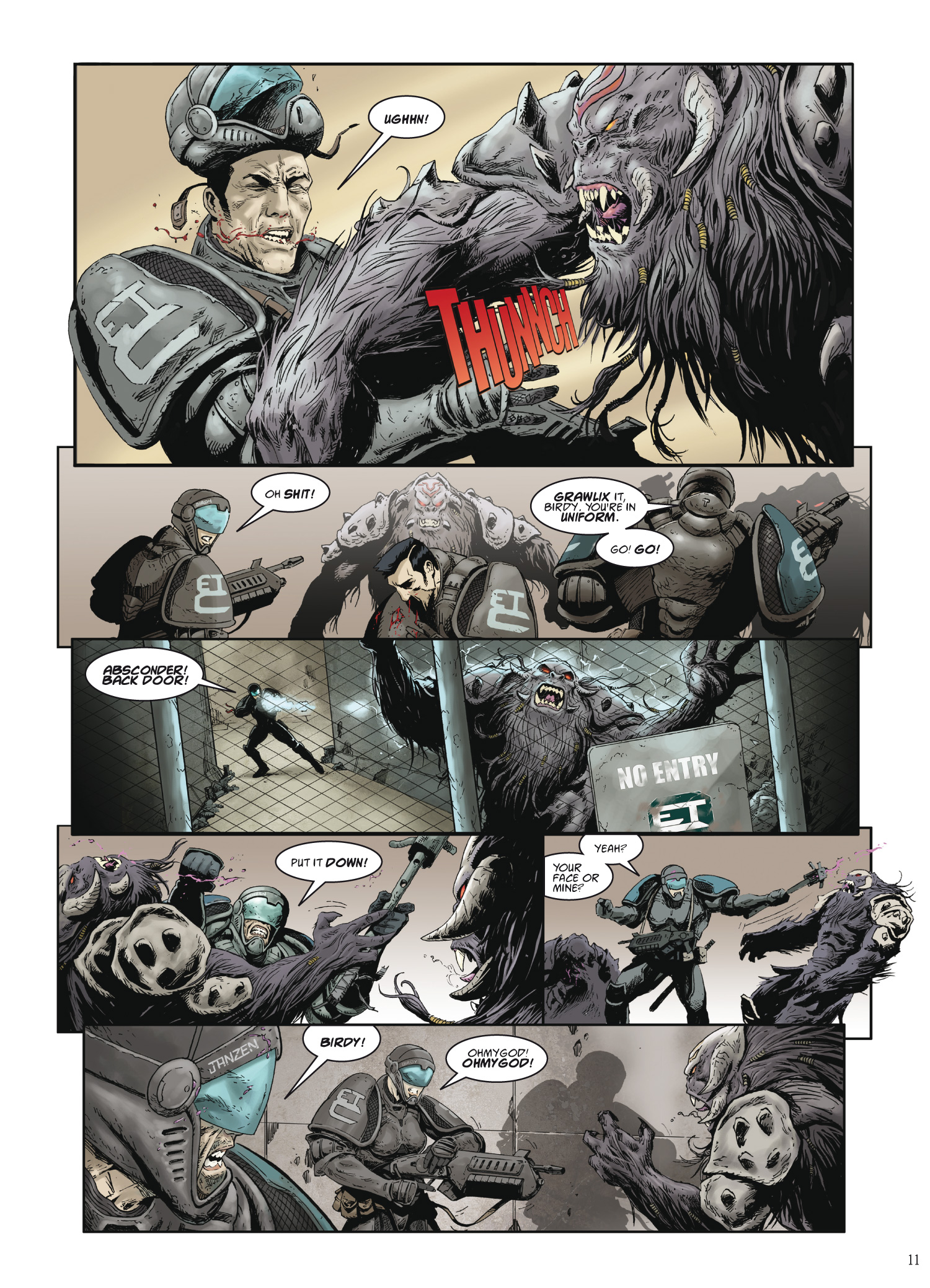INTERVIEW: Dan Abnett on Grey Area, aliens, immigration and satire
11th January 2018
Welcome to the Global Exo Segregation Zone, Earth’s staging post to process countless species of extraterrestrial immigrants looking to visit. And tasked with policing this shanty town holding area, there’s the Exo Transfer Control Squads. Captain Adam Bulliet and his squad have the near impossible task of processing, investigating alien crimes, and keeping the lid on this explosive situation. This is classic 2000 AD sci-fi, mirroring our times, focusing on the very prescient topics of immigration, discrimination, and prejudice.
With the first Grey Area collection out this month, Richard Bruton took a trip to the Global Exo Segregation Zone and presented his papers to writer Dan Abnett…
Richard Bruton: With the first Grey Area collection, This Island Earth, out this month, can you give readers old and new an idea of the premise of the tale and what to expect here in this first collection?
Dan: It’s a series set in the near future, about a decade after Earth has experienced a disastrous first contact event called The Greet. To make sure nothing so damaging ever happens again, Earth patrols its borders with extreme caution, and any visiting alien is obliged to pass through the Grey Area, a handling area for extraterrestrial visitors. The story follows the work lives of officers attached to the ETC, the “border police”, whose job it is to keep the peace and solve problems – sometimes exotic – in Grey Area.
RB: As with much of the best work in 2000 AD and sci-fi in general, there’s a sense in Grey Area that this is very much social commentary as it is a rollicking sci-fi tale. And in this world of Trump and Brexit your take on immigration, discrimination, xenophobia seems more and more topical. Over the course of the series, have you been tempted to get even more topical, reflecting the horrors we see around us today?
Dan: Too often. The series began before many of these things were really hot topics, though clearly the issues have been in the gestalt for a long time and influenced the concept. At the start, I didn’t feel I was ripping my ideas from the front pages, more that I was nodding in the direction of issues that were generally current. But inevitably, these things have become far more emphatic. If there’s satire or commentary in the series, it’s harder to pull off now that the target – or subject – is so obvious. I find myself trying to find different angles, so I’m not ‘on the nose’. It’s become tricky, because a lot of the more obvious and robust storylines I could have done – or thought of doing – would simply seem like clumsy assaults on topics like Trump and Brexit. I suppose the series started out as ‘topical adjacent’, and now has been overtaken by world events, and I work to find a path back to that adjacent place. It wasn’t meant to be a soapbox or corrective, and no one enjoys a blunt message.
RB: There’s a wonderful sense of tongues somewhat in cheeks throughout, with a delightful gallows humour and plenty of snark in the dialogue, or the ridiculousness of some of the situations (I’m thinking of Bulliett drawing the very short straw for an alien cavity search). But more than this, there’s also a sense of playing with the clichés of the genre, knowing that you were going to tread familiar ground and the fun comes from playing with expectations?
Dan: I think that’s all about the adjacent space thing I was talking about. Without the snark undercutting it, it would be a polemic. There’s no reason the characters can’t be as nuanced, or as cynical, as us. They’re supposed to have lived through the same experiences as we have. To me the humour and the characterisation (and the regular bursts of ridiculousness) keep the strip vital.
RB: This collection, as you mention in the introduction, is very much a Grey Area Year One. As such there’s a tremendous amount of world-building going on around the relatively self-contained “case of the week” stories. But things in the later stages of the collection begin to include more and more characterisation and introduces more story elements that serve to set up the epic tale that is to come. Back in 2012, with the start of the series, did you have an idea of where you’d be taking the story, or was it more a case or developing it as you wrote?
Dan: Not as such. The series was conceived as a vehicle for the original artist, Karl Richardson, who basically wanted to draw big aliens and armoured humans (and draw them very well he did). The situation of the strip became a format to allow us to do that as much as possible. So we started with a lot of these ‘case of the week stories’. Complex world building was inevitable, and once you’ve done that – to keep the ‘case of the week’ stories interesting – you see potential for longer and bigger stories that explore the world you’ve begun to build. I certainly didn’t foresee doing the real epics we get to later, but once I’d got there it seemed foolish not to do them.
I suppose the ‘opening out’ of the story and the scale really happened when Mark Harrison came on board as regular artist. I love his work, and we’d worked together before very successfully on Durham Red. Mark is great with character stuff, so we could continue doing that, but he’s an insanely gifted conceptual thinker and, in conversation, our plans and ideas just got bigger and bigger. It’s an approach I like to use: to ask an artist what he or she is interested in doing and then try to accommodate that as much as possible. That doesn’t mean asking the artist to do all the leg-work and idea-bashing for me…. I just think you get the best work in the end from someone who is really enjoying what they’re doing.
RB: Seeing as this collection is year one, and the whole premise of Grey Area comes from the disastrous first contact 25+ years ago, have you ever thought about going back and doing something akin to a Grey Area year zero?
Dan: No, but I have now 🙂
RB: In terms of artists, this collection features three very different styles from Karl Richardson, Lee Carter, and Patrick Goddard. What do you feel each subsequent artist has brought to your stories?
Dan: Yes, this volume is all the ‘pre-Mark” stuff, and though I’ve just praised Mark highly (and will continue to do so), there’s terrific work here. Karl really set the scene, as the original visual concept artist, and his stuff is dynamic, cinematic and very robust. Lee’s work is haunting and creepily alien, which very much suited the main story we were doing, and Patrick is, in my opinion, very underrated. His attention to detail and storytelling is fantastic. I confess I came back to this early period after working with Mark for a long time thinking it would be embryonic, the series finding its feet before Mark came in and blew the doors off, but my memory was faulty and I was doing these three artists a great disservice. I read through this first volume as the collection came together and was taken aback at how strong it was. It’s a terrific ‘first season’ and the artists shine throughout.
RB: As I was rereading Grey Area in this collection I was struck by how much potential it has for being a fabulous TV show. Years ago this would have been unthinkable, with budgets way out of reach. But nowadays, with ever more ambitious TV shows, there wouldn’t be a problem. Any takers so far? Would it be something you’d think could work?
Dan: Nothing I know of so far, but the thought had occurred to me. It’s got all the key ingredients and – as we said – it’s just a little bit topical.

